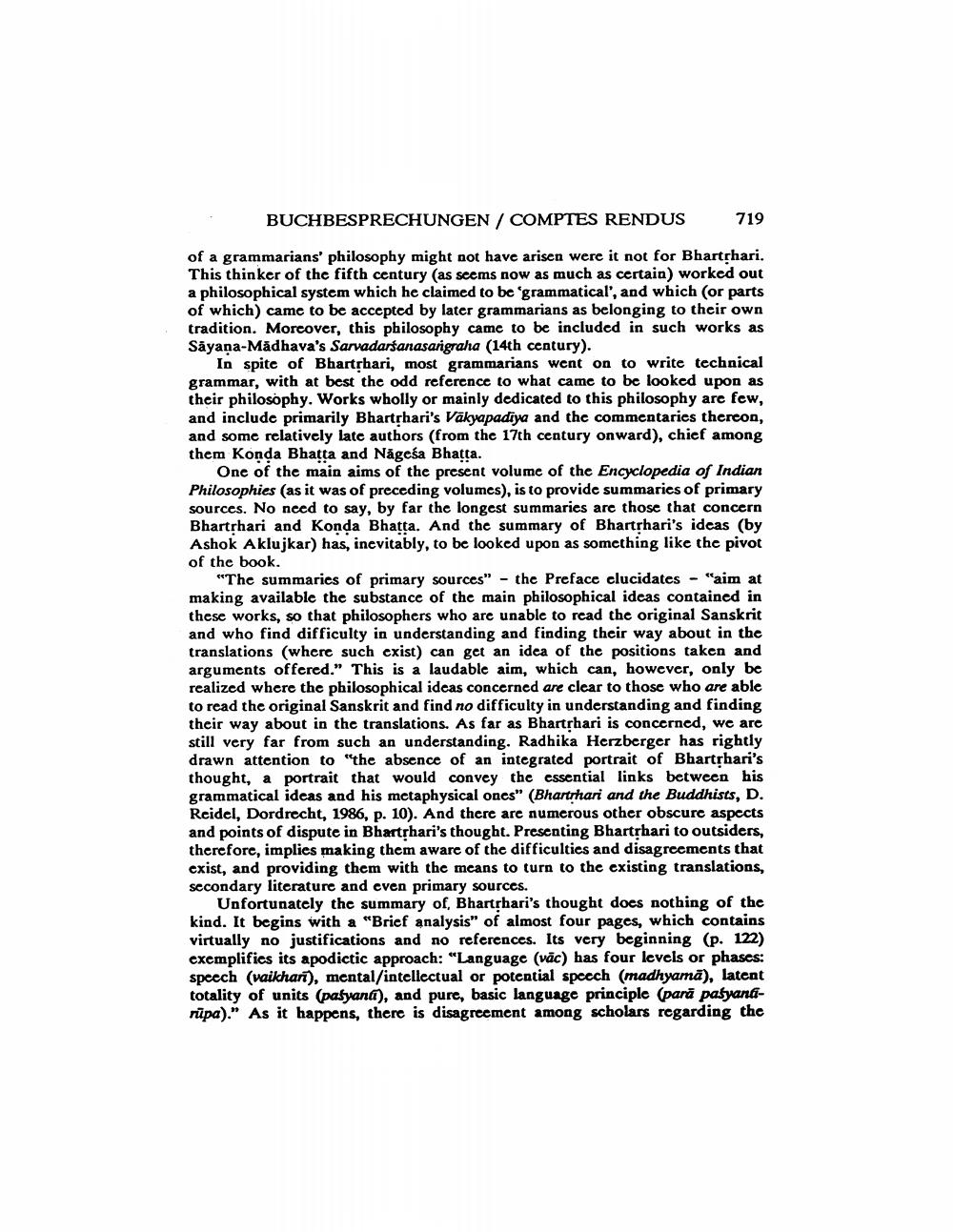________________
BUCHBESPRECHUNGEN / COMPTES RENDUS
719
of a grammarians' philosophy might not have arisen were it not for Bharthari. This thinker of the fifth century (as secms now as much as certain) worked out a philosophical system which he claimed to be grammatical', and which (or parts of which) came to be accepted by later grammarians as belonging to their own tradition. Moreover, this philosophy came to be included in such works as Sāyana-Mădhava's Sarvadarśanasangraha (14th century).
In spite of Bharthari, most grammarians went on to write technical grammar, with at best the odd reference to what came to be looked upon as their philosophy. Works wholly or mainly dedicated to this philosophy are few, and include primarily Bhartrhari's Väkyapadiya and the commentaries thereon, and some relatively late authors (from the 17th century onward), chief among them Konda Bhatta and Nāgesa Bhatta.
One of the main aims of the present volume of the Encyclopedia of Indian Philosophies (as it was of preceding volumes), is to provide summaries of primary sources. No need to say, by far the longest summaries are those that concern Bhartrhari and Konda Bhatta. And the summary of Bhartrhari's ideas (by Ashok Aklujkar) has, inevitably, to be looked upon as something like the pivot of the book.
"The summaries of primary sources" - the Preface elucidates - "aim at making available the substance of the main philosophical ideas contained in these works, so that philosophers who are unable to read the original Sanskrit and who find difficulty in understanding and finding their way about in the translations (where such exist) can get an idea of the positions taken and arguments offered." This is a laudable aim, which can, however, only be realized where the philosophical ideas concerned are clear to those who are able to read the original Sanskrit and find no difficulty in understanding and finding their way about in the translations. As far as Bhartshari is concerned, we are still very far from such an understanding. Radhika Herzberger has rightly drawn attention to "the absence of an integrated portrait of Bhartrhari's thought, a portrait that would convey the essential links between his grammatical ideas and his metaphysical oncs" (Bhartrhari and the Buddhists, D. Reidel, Dordrecht, 1986, p. 10). And there are numerous other obscure aspects and points of dispute in Bharthari's thought. Presenting Bhartrhari to outsiders, therefore, implies making them aware of the difficulties and disagreements that exist, and providing them with the means to turn to the existing translations, secondary literature and even primary sources.
Unfortunately the summary of Bhartrhari's thought does nothing of the kind. It begins with a "Brief analysis" of almost four pages, which contains virtually no justifications and no references. Its very beginning (p. 122) exemplifies its apodictic approach: "Language (vāc) has four levels or phases: speech (vaikhan), mental/intellectual or potential speech (madhyamā), latent totality of units (pafyana), and pure, basic language principle (parā pafyanarūpa)." As it happens, there is disagreement among scholars regarding the




